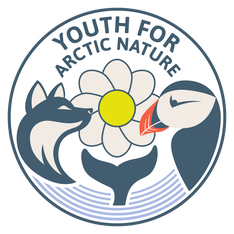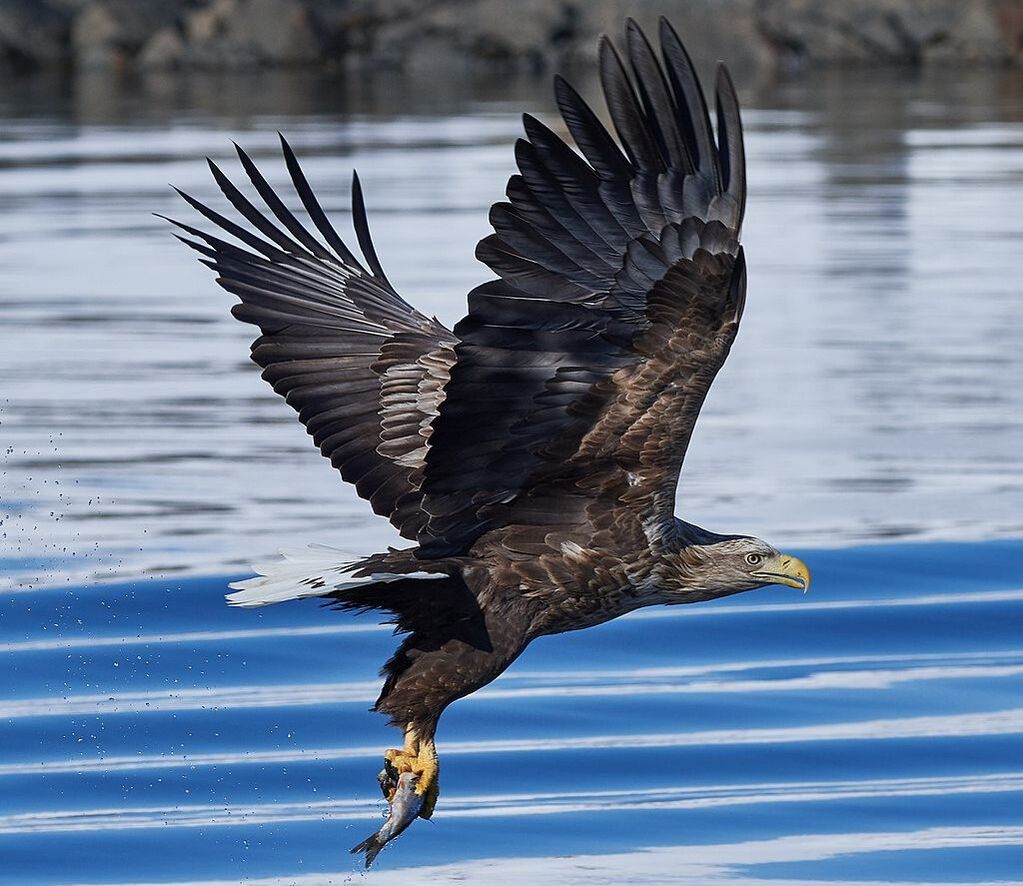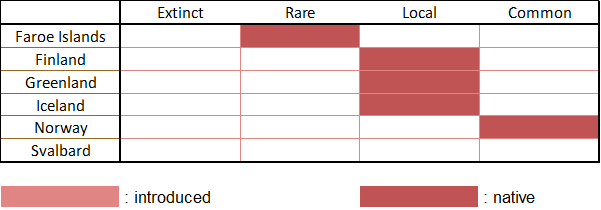|
Vulnerability: regionally endangered Invasive: no Identification: medium Monitoring: medium |
|
What is it? White-tailed eagles are some of the largest birds of prey in the world. The white-tailed eagle can be 66 to 94 cm tall with a typical wingspan of 178 to 245cm. Like most bird of prey species, females are usually larger than males. The plumage is brown with lighter feathers around the neck and head. The tail is white in adults, and the beak is yellow. In juveniles, the entire body is brown with white irregular splotches, and the beak is darker (see the individual on the left in the cover picture). |
|
Where is it? White-tailed eagle are present from southeastern Greenland (where they are considered vulnerable) to eastern Siberia. They are also found all over Iceland (most frequently in the northwest), coastal Fennoscandia, and are very rare visitors to the Faroe Islands. They are not found in Svalbard. Their population is considered endangered in Iceland, vulnerable in Finland, and near threatened in Sweden. The population has been recovering in these areas, but the only country in Europe where white-tailed eagles are considered of least concern is Norway.
|
|
Interesting facts |
- Historically, the white-tailed eagle had a much wider range to the south, even found to breed down to Egypt and Syria. The population declined drastically during the 19th century, becoming extinct in the Middle-East, North Africa, and most of Europe. It also went almost extinct in Iceland. Since then, it has been reintroduced to the UK and Ireland, and has recovered throughout most of its northern European range, including Iceland.
- Today, the biggest threats to white-tailed eagles are electrocution on power lines and collision with wind turbines. Sadly, they are also threatened by use of their habitat for construction or recreation, as well as poaching for eggs or chicks.
Pictures
- Cover picture: "White-tailed Eagles (juvenile) - Europese zeearend (juveniel) (Haliaeetus albicilla) ..." by Martha de Jong-Lantink is licensed under CC BY-NC-ND 2.0
- Presentation picture: "White tailed eagle raftsund square crop.jpg" by Christoph Müller is licensed under CC BY 4.0.
References
- BirdLife International (2021) Species factsheet: Haliaeetus albicilla. Downloaded from http://www.birdlife.org on 02/12/2021
- Ferguson-Lees, James; Christie, David A. (2001). Raptors of the World. Illustrated by Kim Franklin, David Mead, and Philip Burton. Houghton Mifflin. ISBN 978-0-618-12762-7. Retrieved 2021-12-02.
- Finnish Environment Institute. (2008, January 21). The triumphant return of the white-tailed eagle. SYKE. https://www.syke.fi/download/noname/%7B9D264FF7-66B7-4FA9-9968-01D81ABAE3DA%7D/95095















